Audi inches towards full autonomy with traffic jam pilot in its upcoming A8 model
New system allows drivers to take hands off the wheel, feet off the pedals and eyes off the road
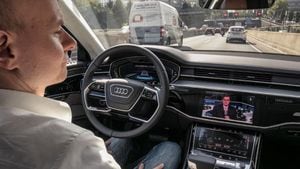
Picture the scene: you are stuck in nose-to-tail traffic, the cars ahead are crawling at a snail’s pace but you are still required by law to remain in complete control of your vehicle, avoiding distractions from smartphones and other gizmos.
But what if a carmaker offered you the chance to simply prod a button and have the car take complete control of steering and accelerator inputs while you enjoyed catching up on an episode of Game of Thrones?
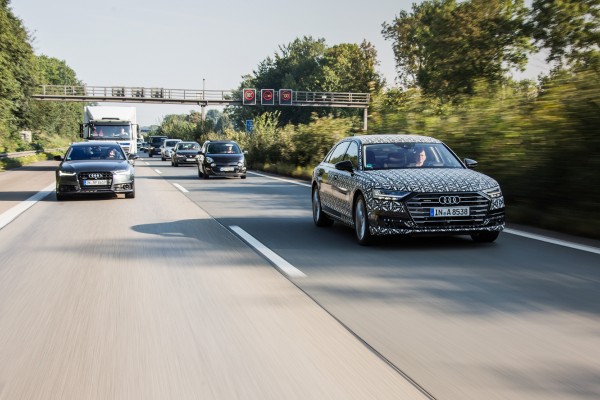
This utopian future (or dystopian, depending on your standpoint) might only be a few years away, as Audi has just unveiled a new system that sees the car take over the task of driving in traffic jam situations, allowing the drivers to busy themselves with other tasks.
Dubbed traffic jam pilot, the new technology is part of a suite of systems that will sit under the German marque’s Audi AI functionality, which harness the power of advanced mid and long-range sensors, cameras and laser scanners to build a comprehensive picture of the world around the upcoming A8 and in turn, allow it to take over advanced driving duties.
The Society of Automotive Engineers (SAE) deems this kind of technology Level 3 Conditional Automation, which would make it the first system of its kind to be offered to customers.
Powering the entire set-up is a central driver assistance controller known as zFAS, which is roughly the size of a tablet computer and sits beneath the car’s architecture to continuously monitor signals from the sensors to create a clear and detailed picture of the car’s surroundings.
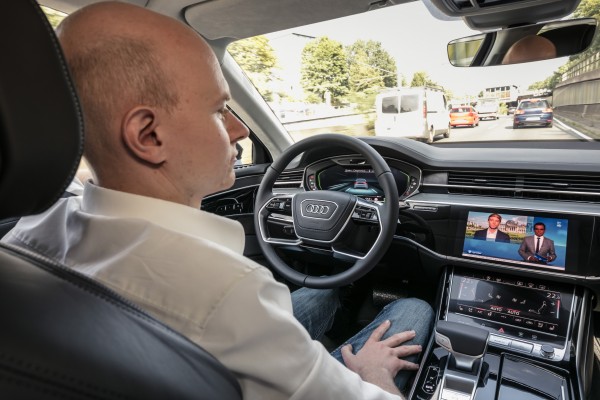
“We now have a system that knows the environments that it can operate in and will actively tell the driver when he or she can take full advantage of it,” explains Stefan Rietdorf, the Audi engineer in charge of the development of automated driving functions.
The conditions in which traffic jam pilot is offered are fairly strict, as the vehicle must not exceed 60km/h (37.3mph), there must be a clear safety barrier between oncoming traffic and the vehicle must be certain that there are no pedestrians or other vulnerable road users in the vicinity.
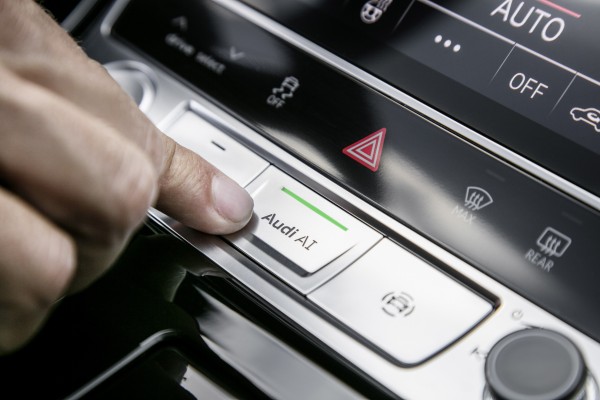
“Traffic jam pilot functionality will only be offered to the driver when it is safe to do so,” explains Rietdorf.
“Unlike other assisted systems, we are allowing the car to take full control of driving duties and potentially allowing the driver to get on with other tasks via the vehicle’s infotainment system.
“This is the key difference between what we have and what others offer. We’ve have had to work extremely hard to convince the regulators and lawmakers of this world that the system is safe,” he adds.
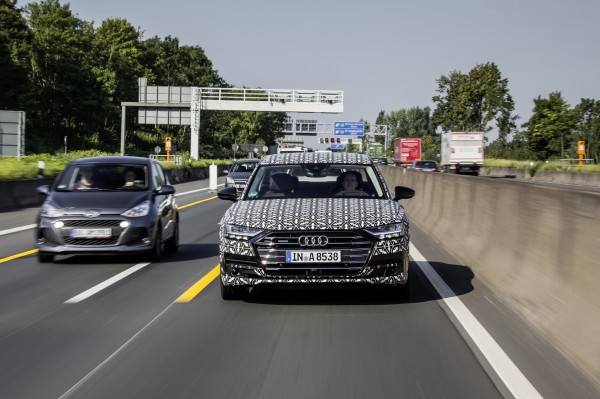
An impressive demonstration from Audi revealed how the technology constantly monitors the driver’s behaviour when traffic jam pilot is activated, including a camera that faces the driver to ensure he or she has eyes open and can take control if necessary.
Once activated, the technology will then physically steer the car within its lane and smoothly keep up with traffic ahead. Should the system detect any abnormalities, such as congestions easing and traffic speeding up, it will politely ask the driver to take over duties.
But the key difference with this technology is its built-in safety features, such as the multiple brake and steering systems, should one fail, and the system’s intelligence and self-awareness to deem whether it is safe to operate.
Should traffic jam pilot need to hand over duties it will first give a gentle visual and audio prompt to the driver, followed by increasingly more severe warnings.
Failure to take over – in the case of a medical emergency, for example – will lead to the A8 slowing down, dabbing the brakes, jolting the seat belt and finally bringing the car to a complete stop with hazard warning lights illuminated.
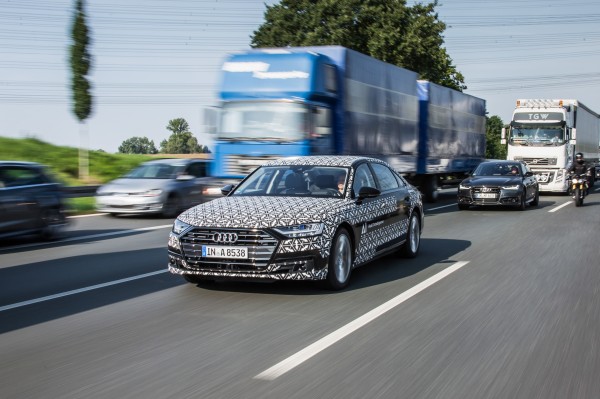
If there is still no response, the on-board system will automatically alert the emergency services with precise location data.
Audi expects its new technology to come to market in around two years time, but stresses it requires both clarity regarding the legal parameters for each country and specific adaptation and testing of the system.
Dr. Wolfgang Schmid, the man in charge of government affairs, digital mobility and renewable fuels at Audi, claims that some governmental bodies are more open to higher levels of vehicle automation, with Germany, for instance, modifying its regulations in late June 2017 to allow driving cars with conditional and fully automated functions “within the designated parameters for use.”
“In this instance, customers would be able to perform side-tasks, such as watching a video or replying to emails via the infotainment, when traffic jam pilot is active,” he explains.
“We hope that other countries will follow suit in the coming months,” he adds.
As a result, Audi will only introduce traffic jam pilot to those markets in which the legal parameters have been met.
By Leon Poultney





